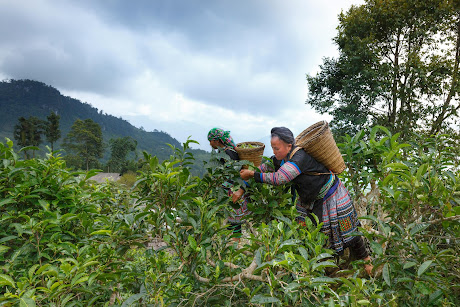 Endura Mass is a widely used weight gain supplement designed to help people increase their body weight, especially if they have difficulty consuming enough calories through regular food. The detailed description of Endura Mass is as follows:
Endura Mass is a widely used weight gain supplement designed to help people increase their body weight, especially if they have difficulty consuming enough calories through regular food. The detailed description of Endura Mass is as follows:
Composition and Ingredients
- Carbohydrates: The primary component, providing quick and sustained energy to help meet the calorie surplus needed for weight gain.
- Proteins: Contributes to muscle growth and repair, supporting healthy weight gain when paired with strength training.
- Fats: Small amounts to provide a balanced nutrient profile, contributing to overall caloric intake.
- Vitamins and Minerals: Contains essential micronutrients like vitamins B and C, calcium, and iron to support overall health and metabolism.
1. Promotes Weight Gain
- Endura Mass is calorie-dense, providing an easy way to increase your daily calorie intake. This calorie surplus is essential for gaining weight, especially for people with fast metabolisms or who struggle to eat large portions.
2. Supports Muscle Growth
- When combined with strength training, Endura Mass can aid in building lean muscle due to its protein content, which is essential for muscle repair and growth after exercise.
3. Provides Sustained Energy
- The carbohydrates in Endura Mass offer a quick and sustained release of energy, making it ideal for active individuals or those who need an energy boost throughout the day.
4. Balances Nutritional Needs
- Endura Mass contains vitamins and minerals like calcium, iron, and B vitamins, which help in maintaining overall health and proper metabolic function, supporting a well-rounded diet.
5. Convenient and Easy to Use
- It can be easily mixed with milk or water, making it convenient for those with busy schedules or limited access to high-calorie meals.
6. Improves Recovery
- For athletes and fitness enthusiasts, Endura Mass can aid in faster recovery by replenishing glycogen stores and providing protein to repair muscles after workouts.
7. Enhances Appetite
- Some users report an increased appetite after using Endura Mass, which can help them eat more throughout the day.
Key Benefits
- Increases Caloric Intake: Adds extra calories to your daily intake, which is essential for gaining weight.
- Supports Muscle Growth: When combined with exercise, it can support muscle development as part of a strength-training program.
- Energy Boost: Provides a significant energy boost, useful for active individuals or anyone with a high metabolic rate.
Usage Guidelines
- Mixing: Typically mixed with milk to increase calorie content or water if you prefer fewer calories. The recommended dosage is often 2-3 scoops per day, though this can vary.
- Timing: It can be consumed post-workout, in the morning, or before bed to support consistent calorie intake.
Potential Side Effects
- Digestive Issues: Some users may experience bloating, gas, or upset stomach, especially if lactose-intolerant (if mixed with milk).
- Fat Gain: Without a balanced diet or exercise, the added calories may lead to fat gain rather than lean muscle.
Who Can Benefit
Endura Mass is best for those who have a fast metabolism, struggle to gain weight naturally, or require extra calories to support an active lifestyle. It’s often used by athletes, bodybuilders, or individuals recovering from illness to regain lost weight.
Would you like tips on incorporating Endura Mass into a balanced diet or fitness plan?

Type Of Endura Mass
Endura Mass offers a few different types of products, each designed for weight gain and nutritional support, meeting different dietary preferences and goals. Here's an overview of the most popular varieties:
1. Endura Mass Weight Gainer
- Primary Purpose: Standard weight gain supplement.
- Description: This is the classic version designed for people who want to increase body weight. It’s high in carbohydrates and contains moderate protein and fats, as well as vitamins and minerals for balanced nutrition.
- Flavors Available: Chocolate, Vanilla, Banana, and Strawberry.
2. Endura Mass Pro
- Primary Purpose: Designed for lean muscle gain and strength.
- Description: Contains a higher amount of protein compared to the standard Endura Mass to support muscle growth and recovery, making it suitable for individuals involved in strength training and bodybuilding.
- Key Ingredients: Includes BCAAs (branched-chain amino acids), glutamine, and creatine to enhance muscle growth and reduce recovery time.
3. Endura Mass Weight Gainer for Women
- Primary Purpose: Weight gain with a formula specially tailored for women.
- Description: Formulated to address the unique nutritional needs of women, it has a balanced mix of carbs, protein, and fats with added vitamins and minerals like iron and calcium.
- Flavors Available: Similar to the standard version, typically available in popular flavors.
4. Endura Mass Herbal
- Primary Purpose: Natural weight gain supplement.
- Description: Contains herbal ingredients for those who prefer a more natural approach. This type includes herbal extracts and natural nutrients, making it ideal for people sensitive to synthetic additives or artificial ingredients.
- Flavors Available: Typically limited, often in vanilla or neutral flavors.
boxput
These options allow users to choose a product that best suits their individual dietary needs and fitness goals. Let me know if you need help selecting a type or would like more information about a specific product! If you want buy this product click the link














